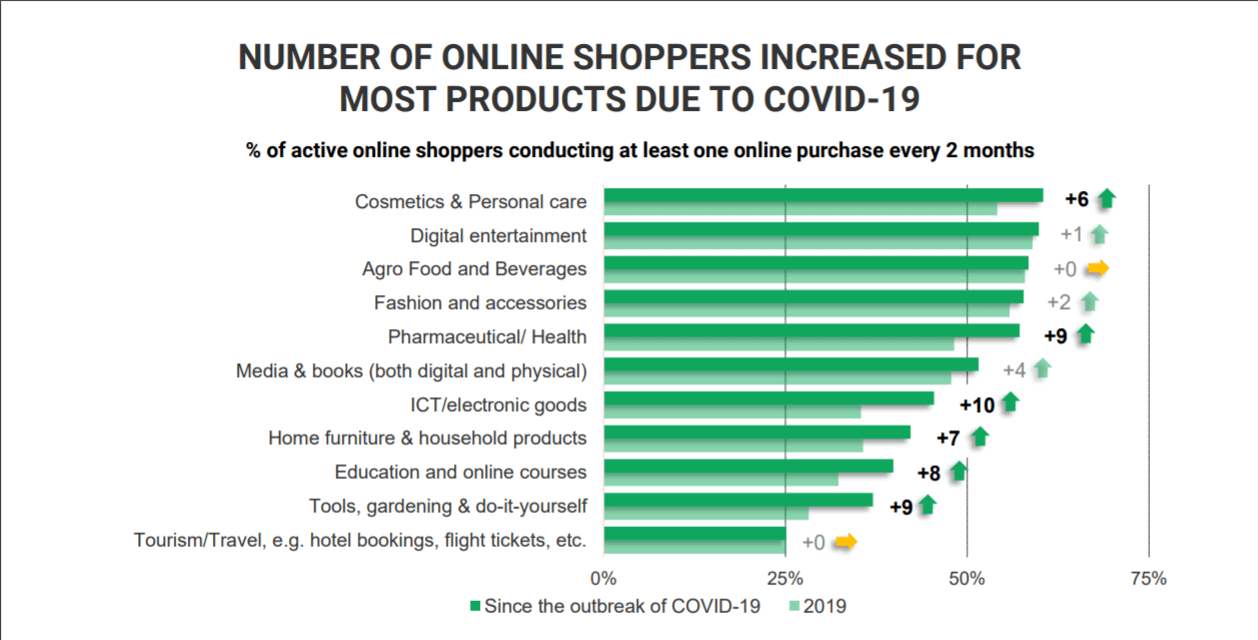To say that COVID-19 has impacted the way customers use their mobile apps and devices is an understatement. Sure, customers were already interacting with businesses digitally. But the pandemic sped up digital adoption and affected every facet of modern life — from entertainment to shopping, from banking to healthcare.
Consumers shifted to low-contact scenarios. Cash-free, contactless purchasing became widespread. To match pace with customers, businesses had to identify these changes quickly and stay ahead of competitors who were growing their user base by simply answering the needs of users.
We worked with Dun & Bradstreet to put together a CMO Playbook that offers strategies to marketing leaders across the globe. And in that playbook, we uncover some of the key trends in customer behavior that have been influenced by the daily reality of the pandemic:
Five Ways Customer Behavior Has Changed
1. Customers Demand Transparency from Brands
If transparency was merely an option before 2020, then that no longer holds true today. Transparency is now a must – particularly for brands seeking to skyrocket their growth.
Sincerity, honesty, clear labeling, and transparency about product sourcing have emerged as the most critical deciding factors of purchasing behavior.
EY’s Future Customer Index says that 87% of customers look for transparency when deciding on a purchase. They also want brands to be trustworthy on social media. In fact, 85% of customers will gladly stay loyal to a transparent company during a crisis.
2. Customers are Trying New Shopping Behavior
A McKinsey Customer Sentiment Study showed that more than 85% of customers in countries like China, India, and Indonesia are trying out new shopping behavior. And more than 65% of them will likely continue this behavior into the future.
- In India, around 94% of consumers moved to different brands and tried new shopping behavior during the lockdowns.
- In Europe, more than 60% of consumers changed their shopping behavior to prioritize convenience and value since the pandemic started, with around 70% to 80% of them expected to continue the behavior in the future.
- In Southeast Asia, 60% of consumers planned on saving more money in the future.
What happens when ecommerce shoppers can’t find what they’re looking for in your app? They go to your competitor’s service, of course. Even if they’ve been loyal customers for years. A sense of urgency has made customers prioritize value, availability, and quality above notions of brand loyalty. And this is being played out on a global scale.
The question is: will your company be ready for customers to switch things up like this?
3. Customers Are Shopping More, Spending Less
According to a study by the United Nations Conference on Trade and Development (UNCTAD), online purchases across various product categories have risen by 6-10%. However, average online monthly spending per shopper has dropped significantly, as customers delay larger expenditures to focus on only essential products and save money.
Source: UNCTAD
4.Customers Are Prioritizing Health and Wellness
No surprise that consumers are spending time and money to take care of their families and themselves. Alongside increased purchases of activity wearables, meditation courses, and yoga apps, people are wanting safety measures from retailers. Or they’re looking for earth-friendly packaging as well as healthy ingredients. They’re even much more aware about how a company treats its employees or where it sources its products from.
What this all points to is an increased focus on healthy living — because health and safety will continue to be a hot topic as long as the pandemic rages on.
5. Customers Are Primarily Using Mobile Apps to Shop
If there’s one thing that the pandemic has done, it is to increase our reliance and dependence on mobile devices for everything from entertainment to shopping.
In fact, according to PwC’s Global Customer Insights Survey 2020, compared to pre-COVID-19 levels, 45% of people increased their online purchases via mobile apps after the lockdowns started. In addition, 63% of consumers are now buying groceries on phones, and 86% are likely to continue to shop online or by phone even after social distancing directives are discontinued.
Source: PwC
But Wait… There’s More
This is just a small portion of the content of the CMO playbook, for a more detailed dive into the strategies that CMOs are using to bring their brands to success, grab a copy of the complete ebook here.
Read More
- Panel Q&A: How Expert Marketers Are Adapting to an Evolving Normal: We asked marketers to pinpoint the trends they were seeing in their industries.

The Mobile Marketing Metrics that Matter to CMOs
Shivkumar M 
Head Product Launches, Adoption, & Evangelism.Expert in cross channel marketing strategies & platforms.
Free Customer Engagement Guides
Join our newsletter for actionable tips and proven strategies to grow your business and engage your customers.















































